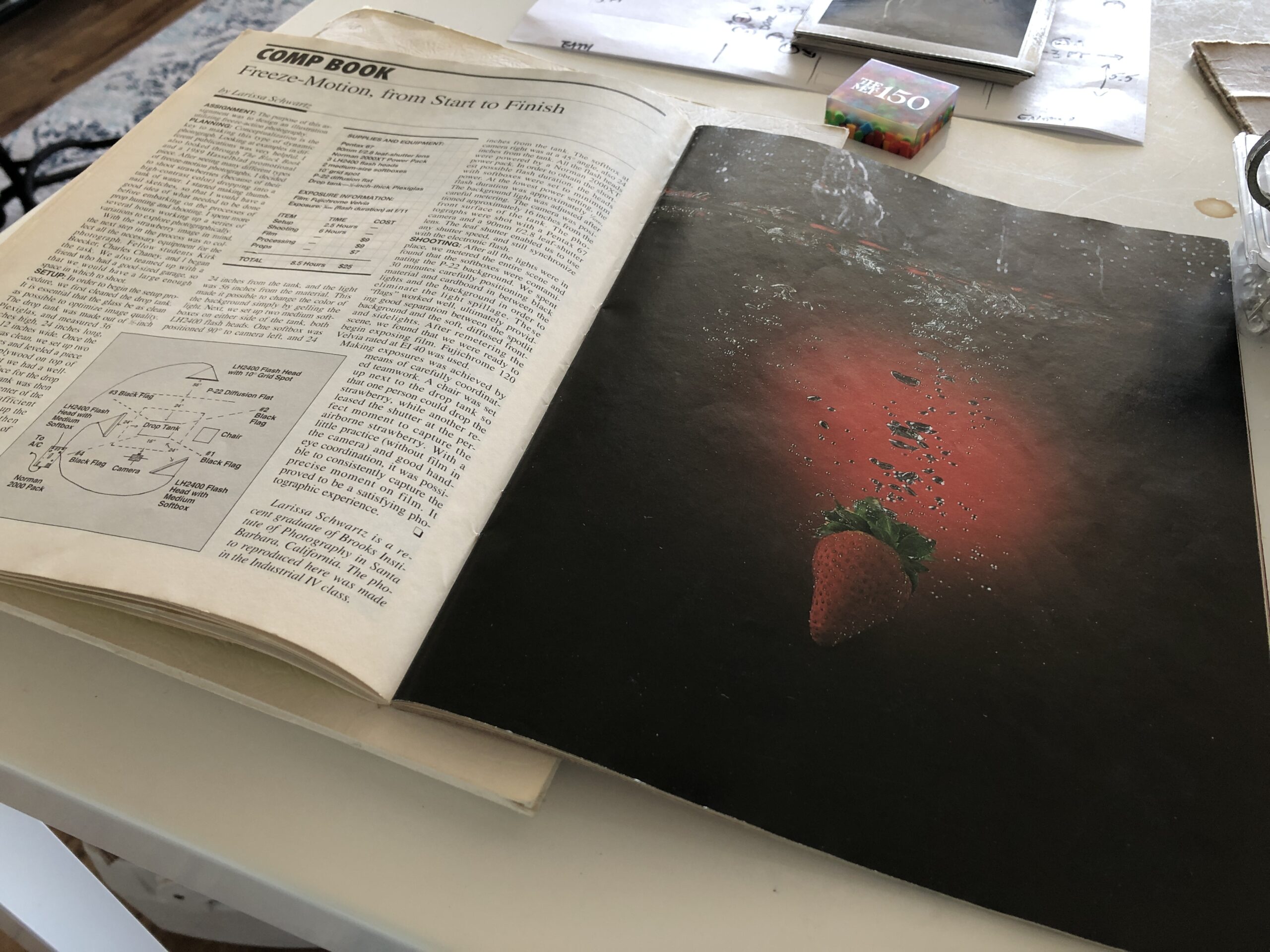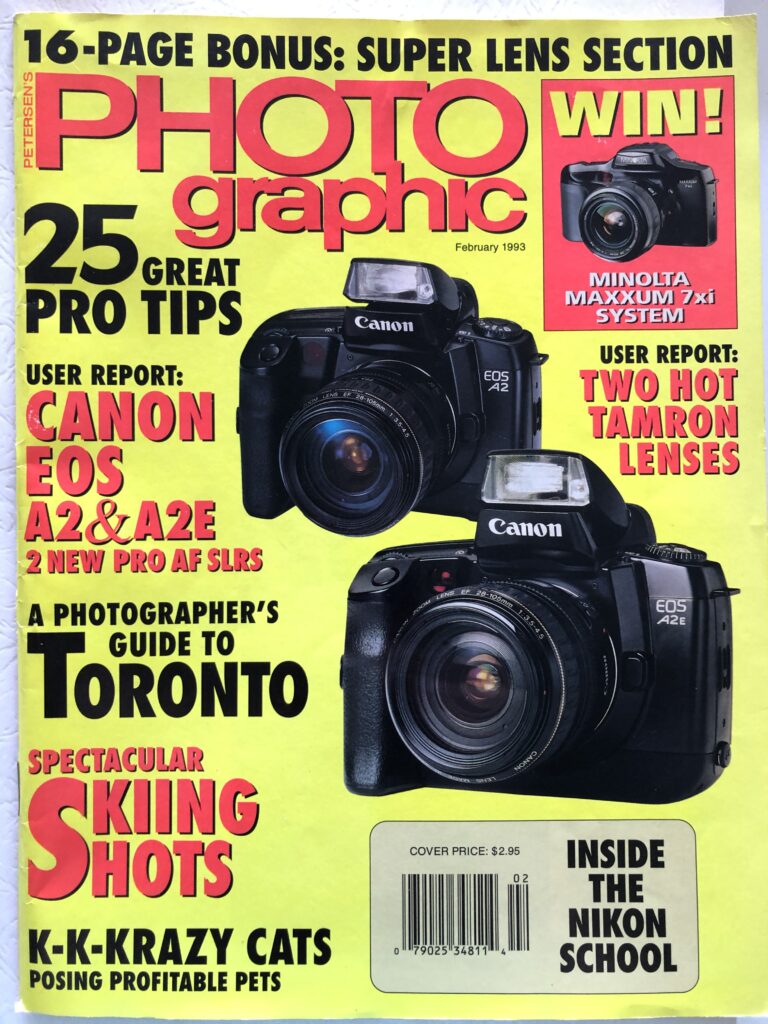In an analog world, high-speed photography meant elaborate, carefully planned, studio sets without the instant gratification of digital imagery.
Assignments for commercial photographers range from simple portraits to intricately planned product images.

This particular photo session was carefully designed to produce an image that needed to meet specific requirements.
A successful photographic outcome meets the needs of a creative brief.
The assignment was to capture an item dropping into a tank of water. It needed to be impactful with moody lighting and one item sharply in focus. I chose fruit I could eat when we were done. I say we because studio photography can be done as a solo photographer but it’s easier and a lot more fun with a team. At this phase of my photo career, I had a good group. I planned, sketched, communicated and we set up, tested, got as close to instant gratification as we could with analog systems, shot a polaroid then exposed real film.
Documenting the entire process was part of the assignment. Without the ability to repeat the result, the effort would have gone to waste. Especially at a time when film and chemicals were the only options, repeatability was critical.
Documenting all the details were the way to create a process by which we could recreate the image as close to the original as possible.
If something happened in the process of taking the film to a lab, the image needed to be recreated to fulfill the assignment. That meant heavy documentation.
Peterson’s Photographic Magazine



This page was created by Larissa Schwartz. No AI was harmed or used in the process. Back to work samples page.
